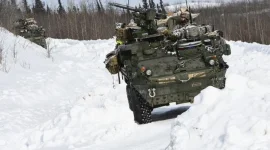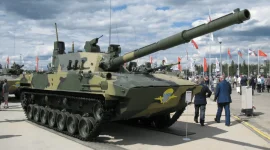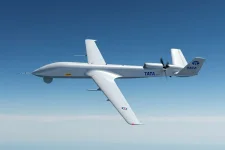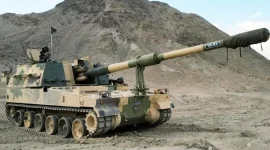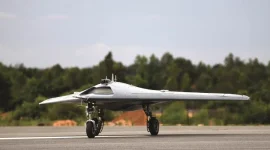- Views: 2K
- Replies: 6
India's program for developing its own advanced military equipment is poised for a significant advancement.
The Zorawar light tank, developed through a partnership between L&T and the DRDO's Combat Vehicles Research and Development Establishment (CVRDE), is scheduled to undergo vital firing tests in the Rajasthan desert later this month.
This marks a crucial step in strengthening the nation's indigenous defence capabilities.
These upcoming trials follow the tank's successful performance evaluations in the high-altitude environment of Ladakh during December 2024. The desert tests will specifically assess the functionality of the Zorawar's 105 mm main gun under conditions of extreme heat.
Successful completion of these evaluations is considered essential for the tank's planned introduction into the Indian Army, with a target year of 2027.
Named after General Zorawar Singh Kahlon, renowned for his 19th-century military campaigns in the Himalayas, the tank is engineered for rapid movement and substantial firepower in difficult terrains like mountains and high-altitude plateaus.
Its development highlights India's commitment to self-sufficiency in defence manufacturing, particularly to address security challenges along its borders, including the Line of Actual Control (LAC) with China, where China has deployed its own Type 15 light tank.
In December 2024, the prototype of the Zorawar was tested in Nyoma, Ladakh, operating at elevations above 4,200 metres (13,800 feet). The Indian Air Force transported the tank to the region, showcasing its capability for quick deployment to remote areas.
During these trials, the Zorawar demonstrated reliable accuracy in multiple firing exercises, confirming its mobility, durability, and combat effectiveness in the challenging conditions of thin air and freezing temperatures.
The development urgency for such a platform was underscored during the border standoffs with China between 2020 and 2022, which revealed the operational difficulties faced by India's heavier main battle tanks (like the T-72 and T-90, weighing significantly more than the Zorawar's approximate 25 tonnes) in the mountainous terrain.
The tests in Rajasthan serve as a prelude to more extensive user trials planned by the Indian Army. These are expected to commence around June 2025 and continue for 12 to 18 months. During this period, the Zorawar will be rigorously evaluated under diverse conditions, including summer heat, winter cold, and high-altitude environments, to confirm its operational readiness for deployment.
Defence Minister Rajnath Singh has previously described the Zorawar project as a significant achievement in India's pursuit of 'Aatmanirbharta' in defence, noting its potential to improve the Army's strategic mobility and capabilities along the LAC, where border tensions with China continue despite some de-escalation agreements reached in 2024.
Upon successful completion of all trials, full-scale manufacturing is planned to commence at L&T's established defence production facility in Hazira, Gujarat. The goal remains to begin inducting the Zorawar into Army service by 2027.
The Army's comprehensive assessment will examine not only the tank's firepower and mobility but also critical aspects such as maintenance logistics, crew ergonomics, and its ability to integrate smoothly with other mechanised units.
This thorough evaluation process aims to ensure the tank meets the Army's specific requirements (General Staff Qualitative Requirements) and is prepared for a service life projected to span 30 years.

